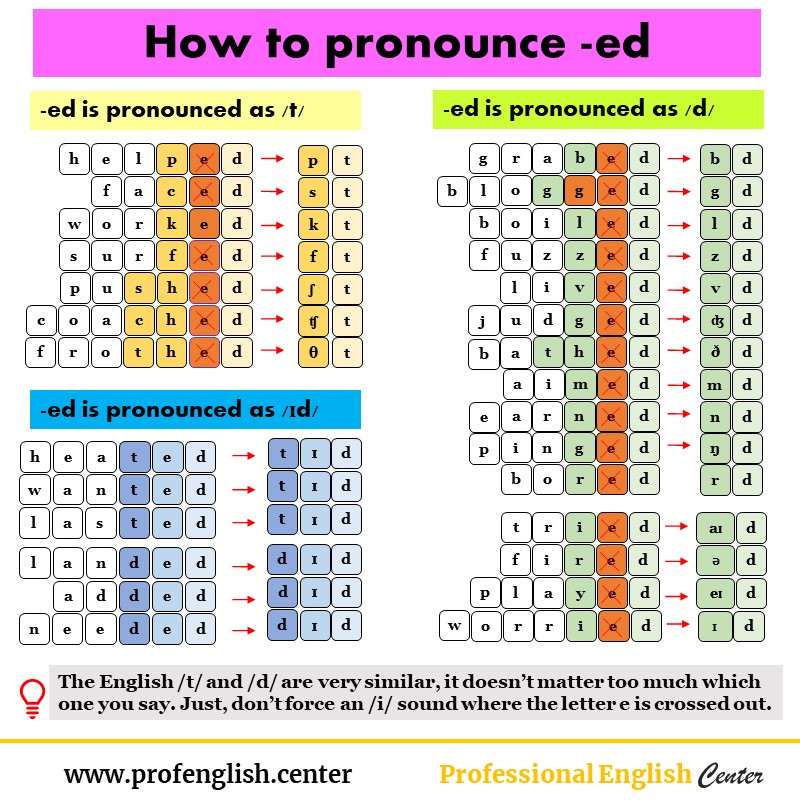The English language is famous for its lack of, or very minimal, conjugation. There are only three word endings (-ed, -s, -ing) that can be considered conjugation, and because there are only three of them, it is very important to get them right and express the correct meaning. When do we use it? We add -ed to regular verbs to form the past and past participle (second and third form). We use the past form in simple past sentences to talk about the past. We use the past participle in present perfect and past perfect sentences, in passive sentences and also as adjectives. As you can see, -ed is quite an important element of English grammar since it can express several different meanings. Although the rules of pronunciation are quite long, they are surprisingly simple. There are three ways to pronounce -ed: /t/, /d/ and /id/.Why is it important to get -ed right?
How do we pronounce it?
The pronunciation of words ending in -ed can be rather challenging for most English language learners. If you are like most of my students, then most likely you also find it hard to pronounce the -ed correctly. In this short article, I will explain you the rules of pronunciation and I will also give you a life-saving quick tip that helps in every situation.
Professional English
Online English Language Trainer for busy professionals
Madrid
Spain
Opening Hours
Monday 07:00–23:00
Tuesday 07:00–23:00
Wednesday 07:00–23:00
Thursday 07:00–23:00
Friday 07:00–23:00
Saturday 08:00–17:00
Sunday Closed





